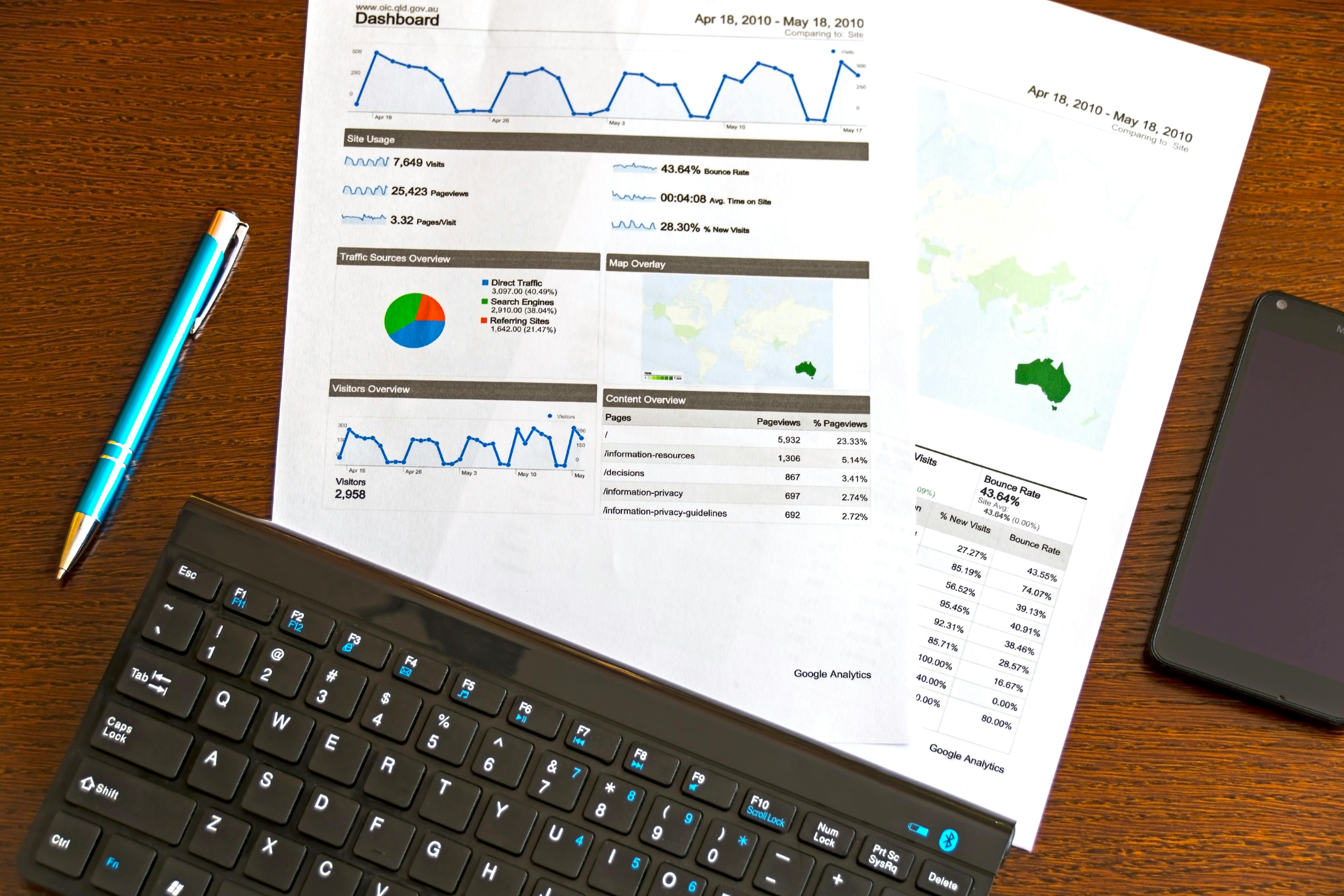
Key Performance Indicators (KPIs) for Digital Marketing
In the fast-paced world of digital marketing, it can be easy to get lost in the numbers. But remember, behind every metric is a real person – your audience. Key Performance Indicators (KPIs) provide valuable insights into how your digital marketing efforts are resonating with your customers. By understanding and tracking these metrics, you can create more meaningful connections and drive better results.

The Heart of KPIs
KPIs are like a compass, guiding you towards your marketing goals. They help you measure the effectiveness of your strategies, identify areas for improvement, and make data-driven decisions. But it's important to remember that KPIs are not just numbers. They are a reflection of your audience's behavior and their experiences with your brand.
Key KPIs to Keep an Eye On
Website Traffic:
Unique Visitors: The total number of distinct individuals who have visited your website within a specific timeframe. Are more people discovering your website?
Pageviews: The total number of pages viewed on your website. Are visitors exploring different pages?
Bounce Rate: The percentage of visitors who leave your website after viewing only one page. Are people staying on your site or leaving quickly?
Engagement Metrics:
Time on Site: The average amount of time visitors spend on your website. Are visitors spending quality time on your website?
Scroll Depth: The percentage of a page's content that visitors typically view. Are they reading your content from top to bottom?
Click-Through Rate: The percentage of users who click on a link or call to action. Are they interested in what you have to say?
Conversion Metrics:
Conversions: The number of desired actions taken by visitors, such as making a purchase, signing up for a newsletter, or filling out a contact form. Are people taking the desired actions?
Conversion Rate: The percentage of visitors who take a desired action. How effective are your marketing efforts in driving conversions?
Cost Per Acquisition: The cost of acquiring a new customer through a specific marketing channel. How much does it cost to acquire a new customer?
Social Media Metrics:
Followers/Likes: The number of people who follow or like your social media profiles. Are people connecting with your brand on social media?
Engagement Rate: The percentage of your audience that interacts with your content (e.g., likes, shares, comments). Do they find your content valuable?
Social Media Traffic: The amount of traffic driven to your website from social media platforms. Is your social media presence driving effectiveness for your brand?
Email Marketing Metrics:
Open Rate: The percentage of recipients who open your emails. Are your hooks enticing?
Click-Through Rate: The percentage of recipients who click on a link in your email. Are they interested in what your emails have to say?
Unsubscribe Rate: The percentage of recipients who unsubscribe from your email list. Are people losing interest in your content?
Search Engine Optimization (SEO) Metrics:
Organic Traffic: The number of visitors to your website from search engines. Are people finding you through search engines?
Keyword Rankings: The position of your website in search engine results pages (SERPs) for specific keywords. Are you appearing higher in search results?
Backlinks: The number of quality websites that link to your website. Are other websites linking to yours?
eCommerce KPIs: Measuring Your Online Success

When it comes to eCommerce, understanding your key performance indicators (KPIs) is essential for tracking your online success. Here are some critical eCommerce KPIs to consider:
1. Conversion Rate:
Definition: The percentage of website visitors who complete a desired action, such as making a purchase or signing up for a newsletter.
Why it matters: A high conversion rate indicates that your website and marketing efforts are effectively guiding visitors towards the desired outcome.
2. Average Order Value (AOV):
Definition: The average amount spent per order.
Why it matters: A higher AOV can significantly impact your overall revenue. Consider strategies like upselling, cross-selling, and offering bundle deals to increase AOV.
3. Customer Acquisition Cost (CAC):
Definition: The total cost of acquiring a new customer.
Why it matters: A low CAC indicates that your marketing efforts are efficient in attracting new customers.
Calculation: CAC = Total marketing expenses / Number of new customers acquired.
4. Customer Lifetime Value (CLTV):
Definition: The total revenue generated by a customer over their lifetime.
Why it matters: A high CLTV demonstrates the long-term value of your customers.
Calculation: CLTV = Average order value Average number of orders per customer Customer lifetime.
5. Cart Abandonment Rate:
Definition: The percentage of shoppers who add items to their cart but fail to complete the purchase.
Why it matters: A high cart abandonment rate can indicate issues with your checkout process, pricing, or shipping costs.
Calculation: Cart abandonment rate = (Number of abandoned carts / Number of carts created) * 100
6. Return on Investment (ROI):
Definition: The measure of profit or loss generated from an investment.
Why it matters: ROI helps you evaluate the effectiveness of your marketing campaigns and allocate resources accordingly.
Calculation: ROI = (Net profit from investment / Total investment cost) * 100
7. Net Promoter Score (NPS):
Definition: A metric that measures customer loyalty and satisfaction.
Why it matters: A high NPS indicates that your customers are likely to recommend your brand to others.
Calculation: NPS = % of promoters - % of detractors.
Setting SMART Goals
To effectively measure and track your KPIs, it's essential to set clear and achievable goals. Use the SMART framework:
Specific: Clearly define what you want to achieve.
Measurable: Make sure your goals can be quantified.
Achievable: Set realistic targets that you can work towards.
Relevant: Align your goals with your overall business objectives.
Time-bound: Establish a deadline for achieving your goals.
Leveraging Analytics Tools
Utilize powerful analytics tools like Google Analytics, Google Search Console, and social media platform analytics to track and analyze your KPIs. These tools provide valuable insights into your audience behavior, campaign performance, and areas for improvement.
Conclusion
Remember, KPIs are not just numbers. They are a reflection of the people who interact with your brand. By understanding and tracking these metrics, you can create more meaningful connections, drive better results, and ultimately achieve your marketing goals.
Don't miss out on this opportunity to grow your business. Book a FREE consultation and let's discuss your marketing needs.
